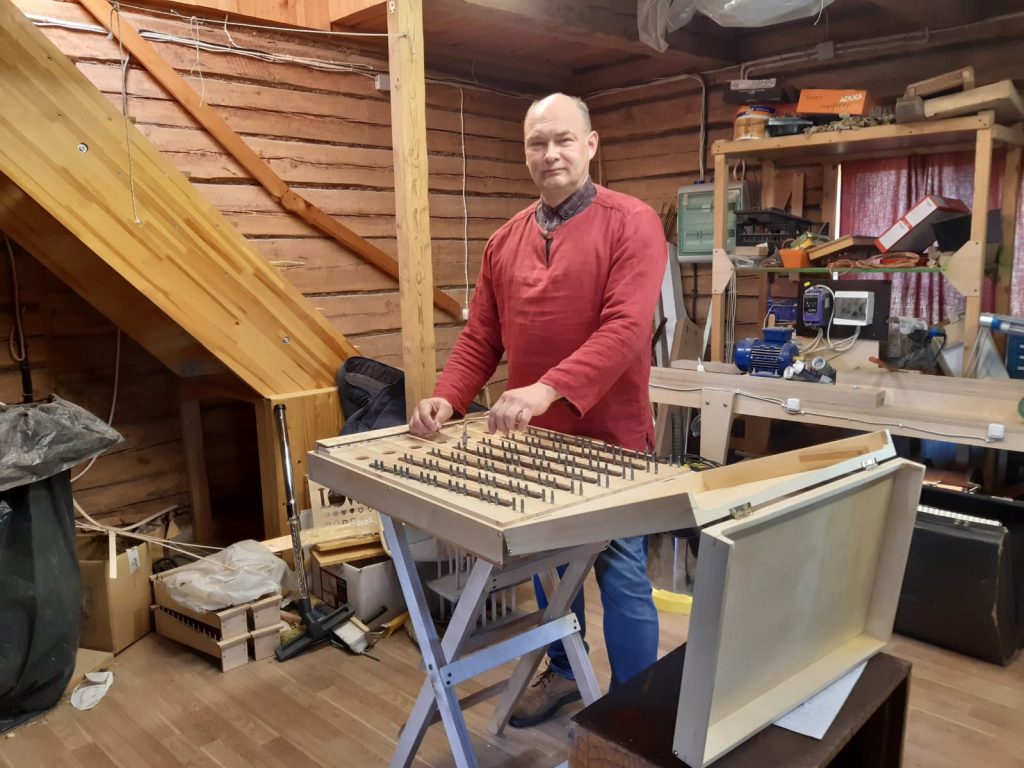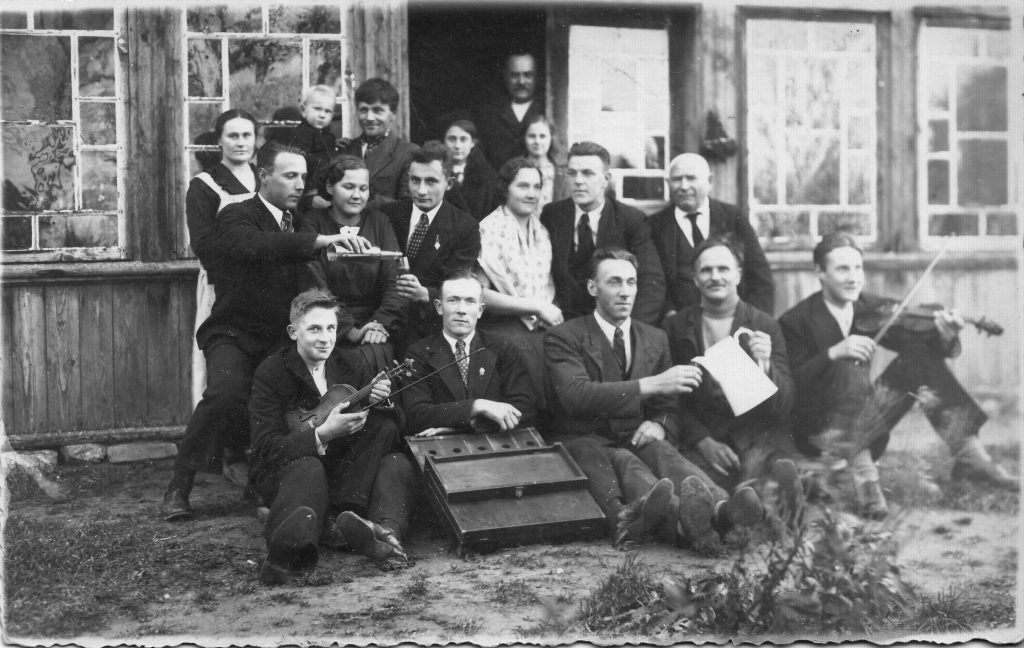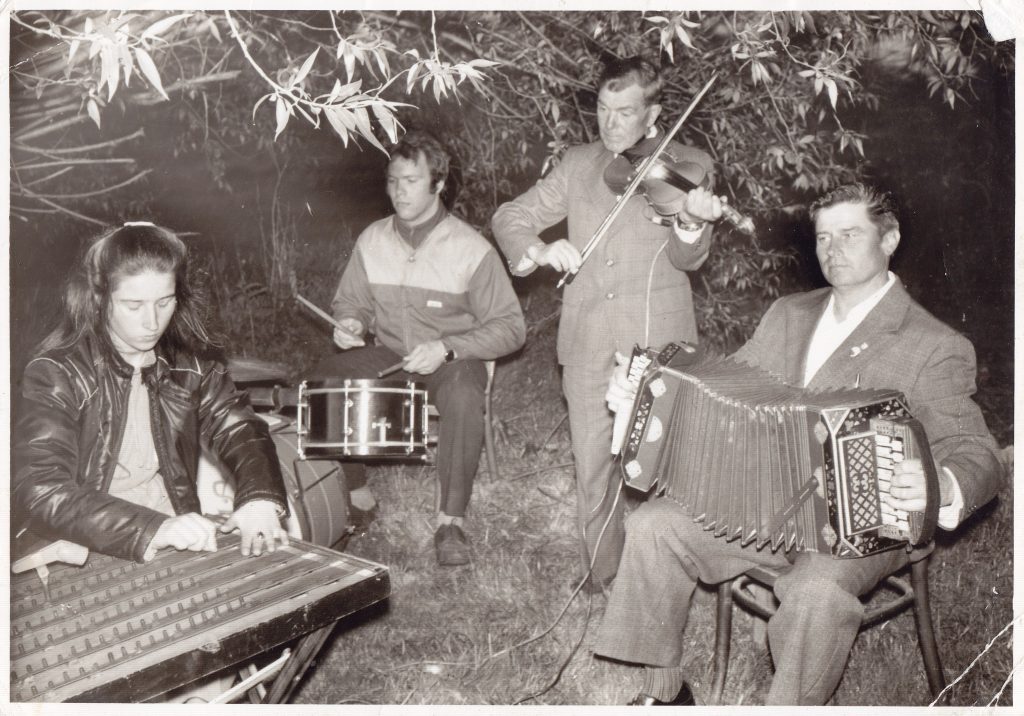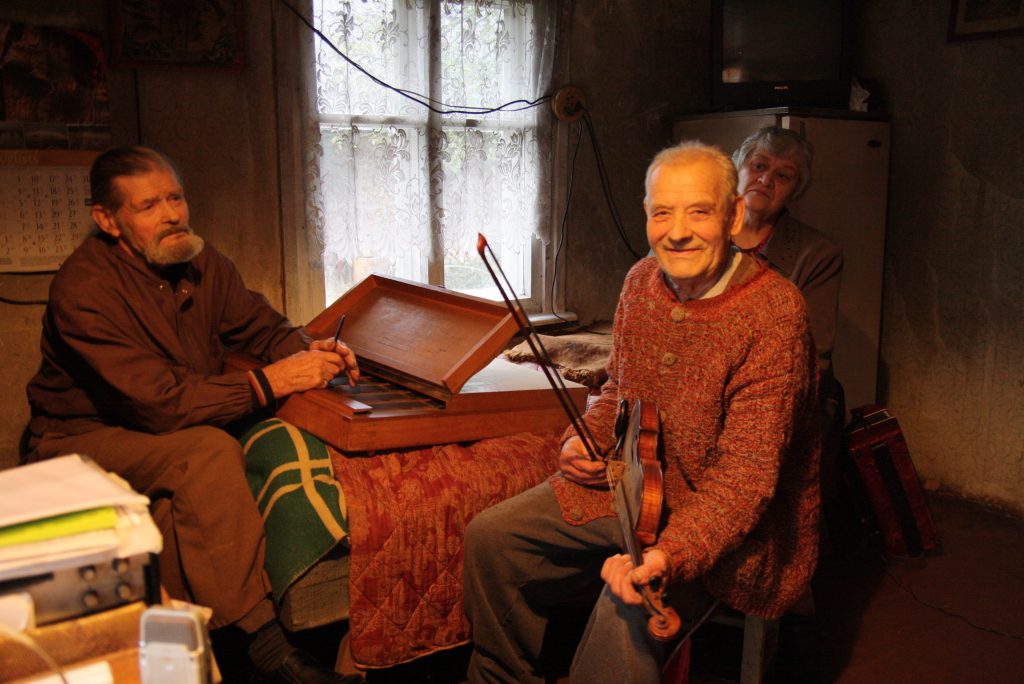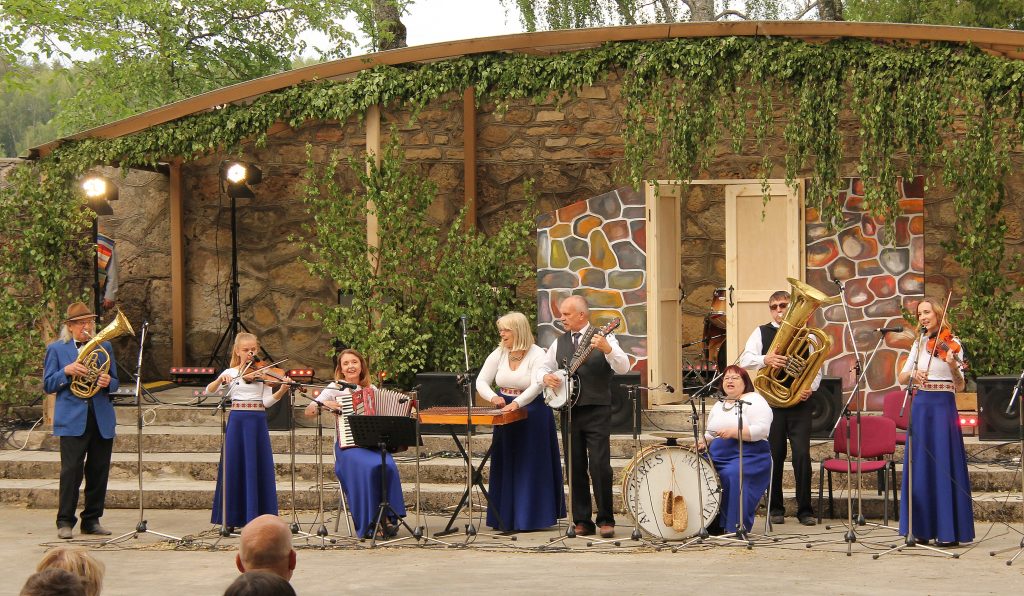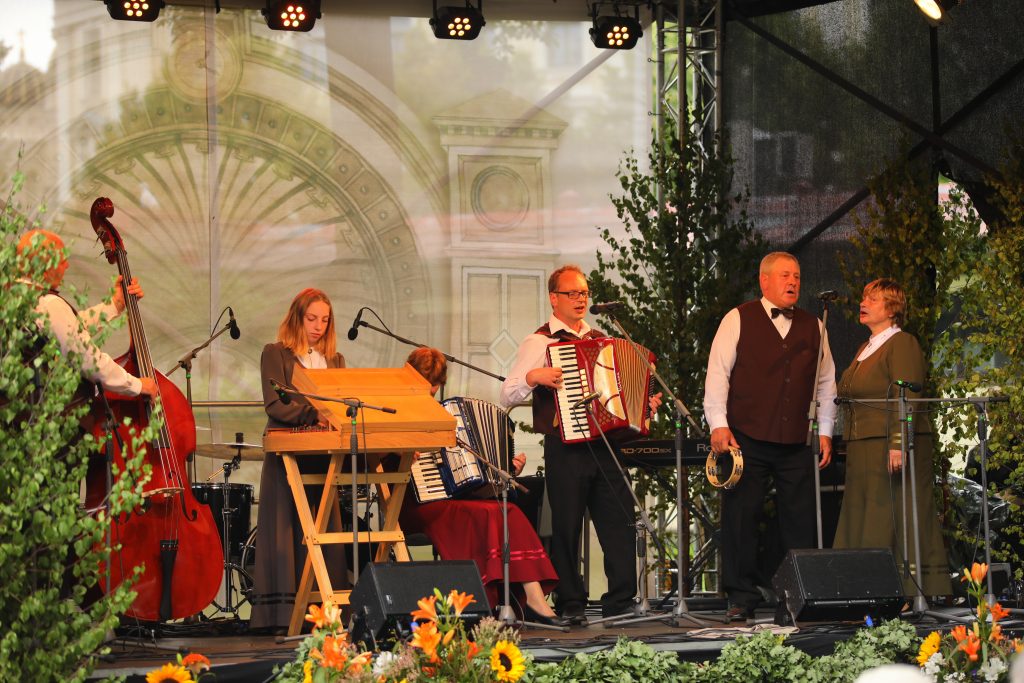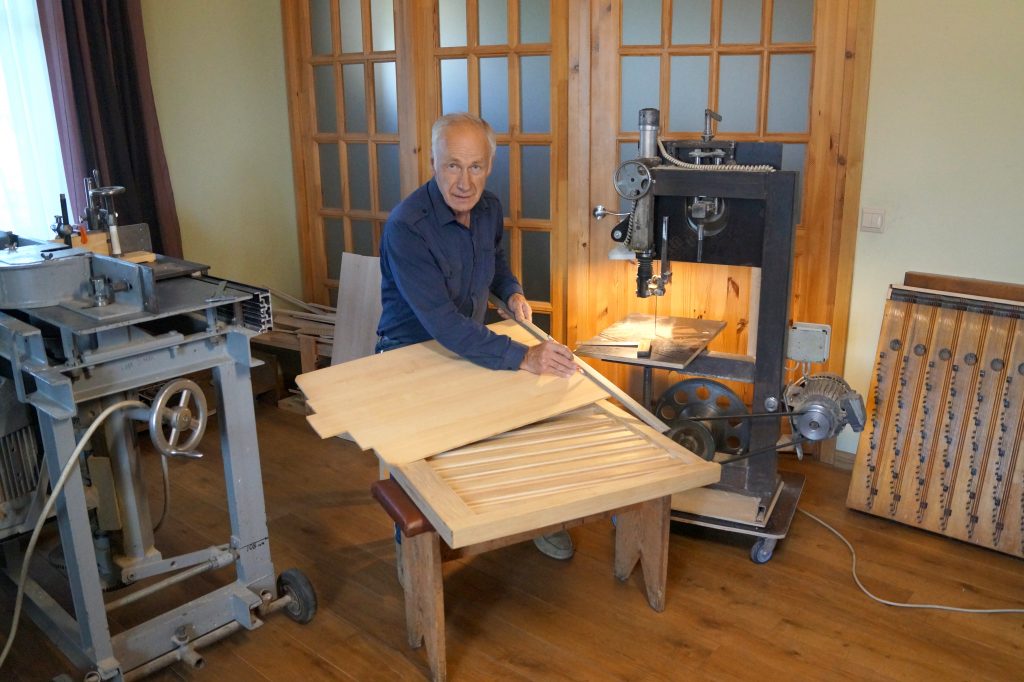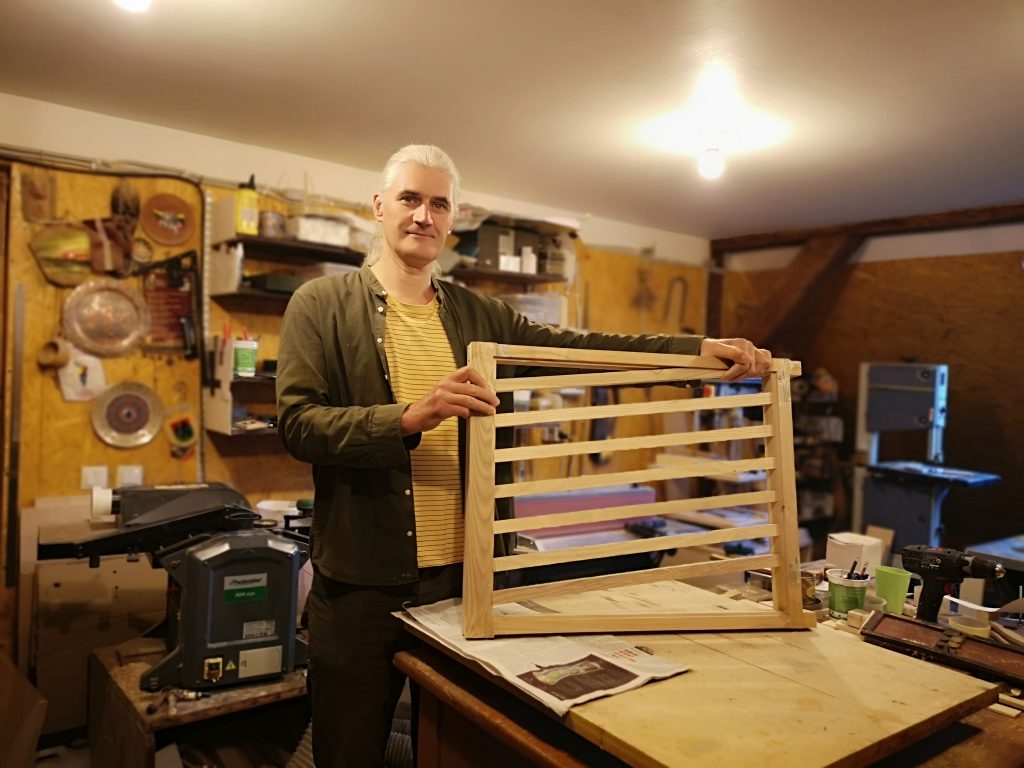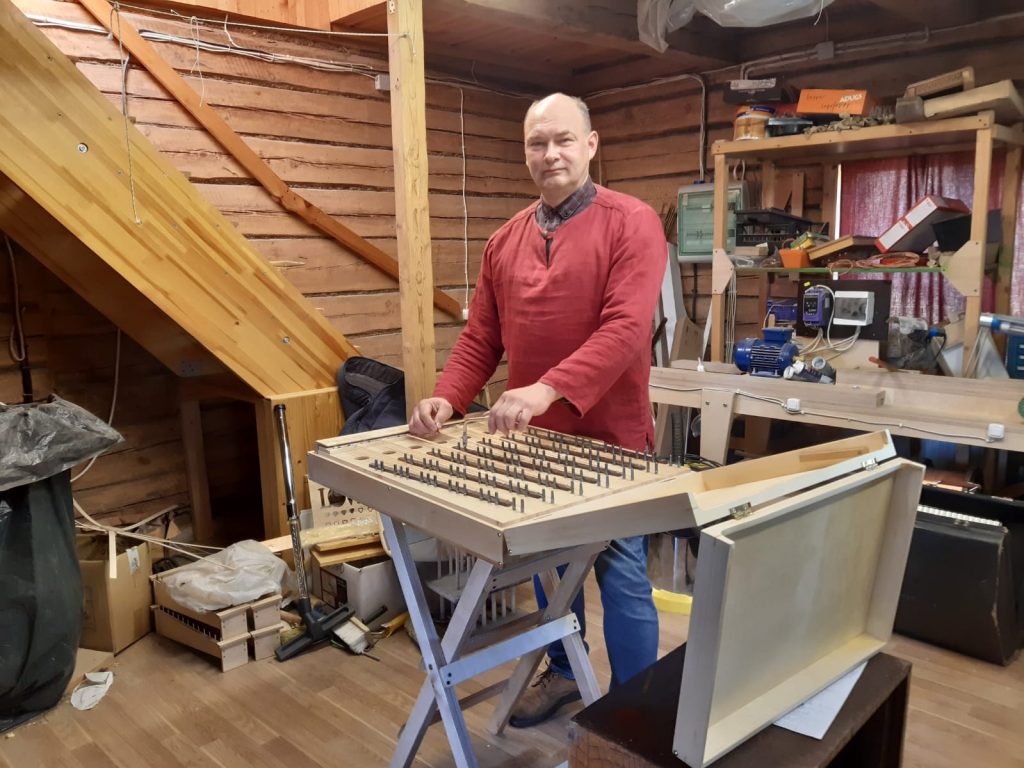Author:
Ilmārs Pumpurs
Music/performing arts
Traditional craft skills
Title
Building and Playing the Chord Zither (2020)
Most commonly known as cītara or dūru cītāra.
Less common: great zither, chord zither, table zither.
Terms found in the literature include chordal zither, accompaniment zither.
In Latgale, the masculine form is used - cītars, dūru cītars.
Geography
Vidzeme and Latgale. Zithers are known and played across Latvia, but they were traditionally more widespread in Vidzeme and Latgale. The instrument building tradition was also stronger in Vidzeme and Latgale.
Zither playing is well known in communities where it was or still is done in family settings, as well as among groups of friends and acquaintances that are involved in the practice of traditional music and folklore.
The Latvian chord zither, developed in the 1920s, with double-strung unison strings and tuning pins at the long end, has become a stable and enduring tradition. Today there are more than fifty regular practitioners but there are many more that know how to play the instrument.
With the changing modes of transmission and inheritance, playing skills are no longer acquired in family or community settings but rather through education (at festivals, courses, lectures, or extra-curricular programming). Skills are learned and sustained by those interested in traditional culture and music independently of the regions where the instrument was most prominent in the past.
The zither-playing tradition is familiar even though it is no longer practised in its earlier localities, but it may well be taking root in new communities and places.
The building of instruments was briefly interrupted in the 1990s but resumed in the early 2000s. At the present time, there are at least three instrument builders who have learned their craft by studying historical instrument construction and connecting with old-time artisans.
Currently, there are enough working artisans to satisfy the demand for new instruments and repair older instruments.
Importance in Community Life
The chord zither is a sturdy and sizeable instrument consisting of a flat, rectangular box (usually with a hinged cover) containing strings arranged in chord groups. Zithers most commonly have seven chords (five to six are less common, but any number from three up to twelve is possible). The name of the instrument comes from "dur", the Latvian word for “major” in musical theory.
This is a very simple instrument to play and song lovers adopted it readily to accompany their singing.
The zither is, however, most prominent in instrumental groups where its role is to accompany a melody instrument. Today that instrument is most often an accordion or an ensemble comprising an accordion, one or more fiddles, mandolins, string bass, and other instruments.
The rich sound of the chord zither serves as an excellent accompaniment for melody instruments. Its strong sound allowed it to maintain its place in ensembles as much louder piano accordions replaced older types of accordions and wind instruments.
To achieve a fuller, more satisfying sound, band leaders, who usually play solo instruments, often also own zithers so players can be invited to join them as needed.
Activities
The chord zither began to achieve traditional instrument status in the mid-twentieth century after achieving widespread use in the country by several generations of musicians.
During this same period, it also came to be seen as an important feature of Latvian musical style. As the composition of popular music groups changed, zither playing shifted to rural bands, who had either learned to play from elders (or copied their styles) and to traditional music groups whose repertoires comprise folk music arrangements.
It is also often used in musical folklore sets, including traditional dance or dancing.
Zithers are also utilized by musical folklore groups including those who provide accompaniment for traditional dancing. Zithers can also be heard at private family gatherings; some bands which include zithers have done well on the pop music scene, performing in concerts, TV shows and broadcasts (Jūlijs, Hāgenskalna muzikanti, Andrejs un draugi, Igauņi family, etc.)
Inheritance and transmission
Acquiring the skills to play the chord zither takes place in several ways. Learning can take place in musical groups, where youth learn from other players. Another is through a variety of courses and masterclasses for those interested in traditional musical instruments. Although it is quite rare, it is still possible to learn to play in a family setting from an older family member.
Since its development in the 1920s, the construction of this unique instrument has been entirely in the hands of local artisans.
Making quality instruments. that sound good and are comfortable to use as well as durable, takes excellent woodworking skills and knowledge of the intricacies of instrument building and the secrets of the tradecraft.
It is likely that drafts, diagrams with tuning schemes and string gauges, as well as practical tips on preparing and acquiring materials were passed on from artisan to artisan.
Currently, there are several artisans (Gunārs Igaunis, Valters Reiznieks, Ilmārs Pumpurs) who have acquired their skills by studying how old instruments were constructed and collecting information from publications and older artisans. It is possible that in the future skills could be learned through apprenticeship or targeted educational programming.
History
Based on the harp zithers common in early twentieth-century Europe, Latvian artisans created a new musical instrument in the late 1920s, which rapidly took on an important place in Latvian instrumental music.
The available literature indicates that by the early 1940s chord zithers were being utilized by many bands across Vidzeme. The instrument soon took hold in Latgale and to a lesser extent in other regions as well.
In the second half of the twentieth century, rural acoustic bands with their characteristic zither sound gradually became seen as traditional with all of the multifaceted meanings that status entailed.
1. Rural music preserved the social music style and repertoire of the independence period which helped the musicians and their audience maintain cultural continuity and a sense of psychological independence.
Music-making took place in informal community gatherings, such as annual festivities (summer solstice or Jāņi), family celebrations (weddings, birthdays, anniversaries) as well as in professional and interest groups (those from collective farms and other amateur groups).
2. The zither and its playing, as a special, distinct cultural heritage passed down from the previous generation, became both a sign of national belonging and an affirmation of belonging to the cultural model of the "good old days", often also a family heirloom.
3. A stable understanding of what rural bands should sound like emerged during this period. It called for a strong accompaniment of rich timbre which was amply provided by the chord zither. It is the combination of the zither with other professional musical instruments (accordions, fiddle, double bass) that gives rural bands their characteristic sound while also determining their repertoire and musical style.
4. The making of this uniquely constructed instrument has always been in the hands of local artisans. The best instruments were made by Vinters, Sīpols, and Goldbergs among others, and these have received special recognition; their owners were proud of them.
Zithers were built during the Soviet years with creative efforts made to deal with the shortage of strings and tuning pins. Even now musicians are prepared to wait years for an instrument.
In the 1970s and 1980s, as traditional musical groups professionalized, using the zither was challenging because it could not meet the demands of the folk music arrangements of the time because of the wide range of key signatures, modulations, and minor chords that were used.
Since the 1990s, interest in traditional music and rural repertoires has been growing steadily along with interest in both playing and buildling zithers.
Zitherists active in traditional music and folklore groups now number more than fifty. In recent years, the artisans known to us have built more than ten new instruments annually.
Additional Information
The repertoire and use of the chord zither do not really differ from those of other instruments used by rural music groups.
Zither music is linked to the musical situation and knowledge of the relevant musical repertoire.
In practical terms, musicians must be able to tune it, which is not always the case for all players, but makers and more skilled musicians who may play other instruments are often able to do so.
In addition to woodworking skills and knowledge of materials, instrument makers should also have an understanding of the acoustics of this instrument.
Masters
Three levels of traditions bearers are vital to the maintenance and safeguarding of zither building and playing.
1. Informants are individuals who learned to play in traditional settings and traditional ways, understand and can describe playing techniques, the repertoire, and musical situations (regardless of whether or not they are currently active practitioners).
2. Active zitherists who play in a traditional style that they have learned in a traditional setting or through training. (This does not include players who use the instrument but have not learned the traditional style of playing and are therefore not included.)
3. Instrument makers who build chord zithers making use of the design they inherited along with the knowledge accumulated through tradition.
Zitherists:
1. Dzintra Apsīte (Valka),
2. Juris Prancāns (Medņeva),
3. Sandra Lipska (Krape),
4. Mārtiņš Mediņš (Bārbele),
5. Sandra Budeviča (Limbaži),
6. Modris Kaņeps (Rencēni),
7. Aija Jurāne (Salnava),
8. Ilze Foldāte (Durbe),
9. Valters Karlsons (Rīga),
10. Andris Ušpelis (Rēzekne),
11. Stanislava Skudiķe (Rucava)
12. Juris Ruciņš (Zvirgzdene),
13. Vija Orinska (Kārsava),
14. Signija Šulce (Ķekava),
15. Dzintra Cāle (Lieģi),
16. Aleksandrs Maļevičs (Dagda),
17. Inta Engere (Kārķi),
18. Velga Gredzena (Bebri),
19. Rasma Igaune (Gaigalava),
20. Valters Reiznieks (Limbaži),
21. Gunārs Igaunis (Gaigalava).
Masters Artisans:
1. Gunārs Igaunis (Gaigalava)
2. Ilmārs Pumpurs (Krape)
3. Valters Reiznieks (Limbaži)
Institutions and Organizations
A significant number of organizations and institutions are involved in maintaining and safeguarding the chord zither tradition either directly or indirectly.
1. The support of municipalities and their cultural institutions is important because most traditional music and folklore groups operate with their support.
2. Educational and cultural education institutions that host many children’s folklore and traditional music groups where zither playing is taught and supported.
3. The Latvian Academy of Culture, the Jāzeps Vītols Latvian Academy of Music, Daugavpils University, and other post-secondary institutions connected to cultural education all play an important role.
The knowledge and understanding of intangible cultural heritage that specialists receive at these institutions can affect the support offered to traditional instruments and traditional music (including the chord zither) in their workplaces.
4. State and municipal museums, archives which hold documents and instruments. (Among the most important are The Ethnographic Open-Air Museum of Latvia, the National History Museum of Latvia, and the Archives of Latvian Folklore.) These materials serve as important sources of information.
5. The Skaņumāja Society [House of Sounds] is an organization interested in safeguarding and promoting the skills needed to play all traditional musical instruments and has accepted responsibility for building chord zithers and inscribing this tradition in the National List of Intangible Cultural Heritage.
6. SIA BALT HARMONIA
7. Music association IMUS
Strengthening the Tradition
The chord zither building and playing traditions are presently seen as stable and not requiring any special or extraordinary measures for their safeguarding.
Zithers are being played in many folklore and traditional music groups, rural bands; some are under the auspices of cultural institutions, others are informal.
Community and commercial demand for authentic musical styles are quite stable. Artisans are capable of meeting the demand for new instruments as well as instrument repair.
The construction and acquisition of new instruments are supported by municipalities, state financial support programs, and private funding.
Instruction in zither playing is periodically offered by the Latvian National Centre for Culture and by Skaņumāja at summer camps and masterclasses for children and adults.
More detailed information about the care and tuning of chord zithers is available on the Skaņumāja website www.muzikanti.lv.
A significant number of recordings and videos by old-time zitherists are available from the Archives of Latvian Folklore and traditional music archives of the Jāzeps Vītols Latvian Academy of Music.
Continuity/Development
Alongside the activities planned by others who sustain the zither-playing tradition, the Skaņumāja Society, as the applicant for this submission, has made plans for a variety of activities over the next five years (including identifying additional funding and acting within the constraints of available funding).
1. Continue to provide information about the Skaņumāja Society’s exhibition of traditional musical instruments and to develop by mid-2021 an in-depth reflection of the tradition.
2. Continue (until 2025 and further) to provide information about the zither-playing tradition and its significance in traditional music bands in courses, lectures, and masterclasses organized by the society.
3. To provide, at least annually, skills development opportunities for musicians in music sessions and masterclasses under the auspices of the Saspēlēsim Skaņumājā [Let’s play music together at Skaņumāja] project, which began in the fall of 2019.
4. To continue (at least until 2025 and further) instrument building in the Skaņumāja workshop, paying attention to instrument-building technologies, sound quality, and improving ease of use (building at least three instruments per year), continue cooperation with other artisans in improving instrument quality.
5. Issue a new Hāgenskalna muzikanti [The musicians of Hāgenskalns] album in 2020, as an example of a quality traditional zither-playing band.
6. In cooperation with festival organizers, develop and present a traditional music event (including the zither) at the Baltica 2022 folklore festival.
7. Continue ongoing (until 2025 and further) evaluation of folklore and traditional music events in order to assess and document the quality and dynamics of traditional expression, and, if necessary, to take steps to improve the situation.
It will not be possible to safeguard the zither-playing and building tradition apart from other traditional music endeavours that promote and sustain the tradition, which includes ensuring the ongoing work of musical groups, concert and festival programming, and educational opportunities, etc. Only then will it be able to survive as part of a healthy cultural ecosystem.
The goal of the endeavour is to expand the instrument’s visibility among cultural specialists and in the wider community by encouraging traditional music groups and folk groups to choose to use the chord zither, improve the knowledge level and skills of current players, promote traditional playing styles, and ensure the availability of good quality instruments.
Threats to the Tradition
The chord zither-building and playing tradition are currently stable and there are no short-term threats.
Chord zithers are being played in traditional music groups and rural bands. About half of the 60 groups that participated in the 2018 Song and Dance Festival made use of zithers.
Zithers are likewise being used in many musical folklore groups. At this time zitherists who play in the traditional style number more than fifty.
At least three artisans are currently involved in building zithers. This is sufficient to satisfy the current demand.
The long-term outlook for the safeguarding of this tradition could be affected by views held by organizations responsible for cultural education and traditional music processes, which can foster traditional music styles or sideline them from mainstream culture, thus reducing their prestige and visibility.
The recognition of the zither-building and playing tradition as an element of Intangible Culture Heritage and inclusion on the National List can reduce these risks by providing clear testimony of this tradition’s significance and value.
Applicant
Association "Skaņumāja", reg. no. 40008106801
Photo Gallery
Audio Materials
Video Materials
Publications
Priedīte Ī. (1983). Ko spēlēja sendienās. Rīga: Zinātne.
Priedīte Ī. (1993). Cītaras un meistari: katalogs. Rīga: Latvijas etnogrāfiskais brīvdabas muzejs.
Muktupavels V. (2017). Tautas mūzikas instrumenti Latvijā (Folk Music Instruments in Latvia). Riga: Academic Publication of the University of Latvia.

